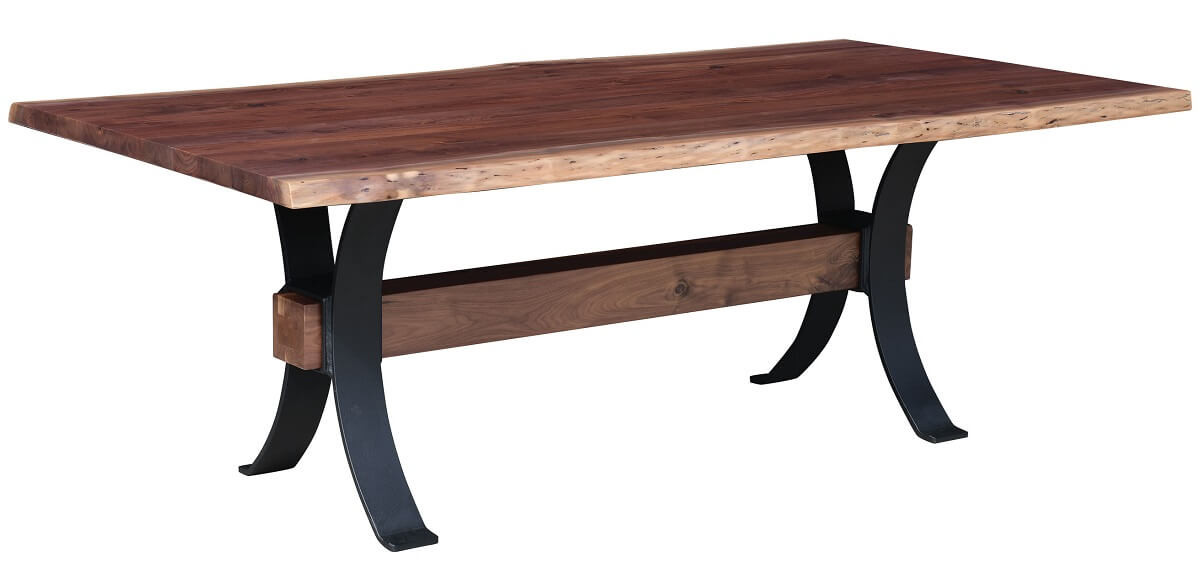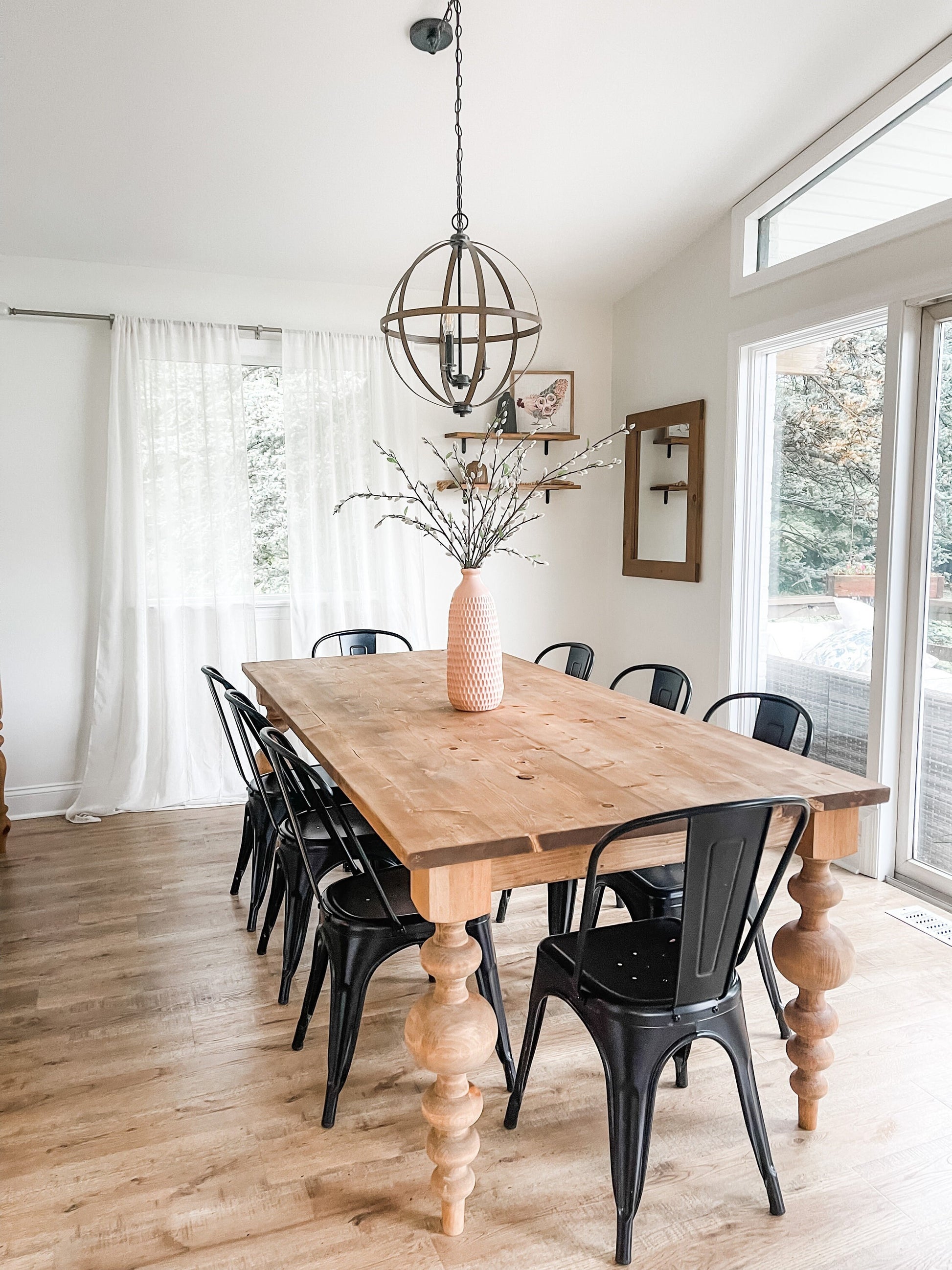The Impact of Dining Room Table Legs on Your Table's Overall Design
From Typical to Modern: Find the Perfect Eating Area Table Legs for Your Design
While timeless layouts such as cabriole and transformed legs evoke a feeling of timeless elegance, modern styles like barrette and geometric alternatives present an opportunity for striking visual passion. As you consider these aspects, the inquiry remains: just how can you perfectly incorporate these varied leg designs to develop a harmonious dining experience?
Understanding Table Leg Styles
The selection of dining room table leg designs can considerably affect both the visual appeals and capability of the room. Each leg design adds one-of-a-kind sensible features and aesthetic components, providing to diverse design choices and use needs. Recognizing these designs is important for choosing the ideal eating table that lines up with your total interior layout vision.
As an example, conical legs provide a clean, timeless appearance that can enhance a room's elegance, while stand bases provide security and make the most of legroom, making them excellent for smaller areas. Hairpin legs, a hallmark of mid-century modern-day layout, introduce an industrial style, enabling an airy, open feeling. Likewise, trestle legs evoke rustic beauty, supplying robust support and a sense of timelessness.
In addition, the choice of materials plays a considerable role. Wood legs can bring heat and texture, whereas metal options typically convey a streamlined, contemporary ambiance. Eventually, understanding table leg styles is necessary for creating a cohesive eating area that shows personal design while ensuring functionality and convenience. By thoughtfully thinking about these elements, you can improve both the practical and aesthetic charm of your dining area.
Traditional Table Leg Options
When picking dining-room table legs, traditional choices frequently personify timeless style and craftsmanship. These layouts mirror a rich heritage and a commitment to high quality, making them excellent for those who value traditional aesthetic appeals.
One of the most legendary typical leg designs is the cabriole leg, identified by its elegant bent shape. This design frequently includes attractive carvings and is most generally located in Queen Anne and Chippendale furniture. Another popular alternative is the turned leg, which boasts a collection of smooth, rounded forms that offer a timeless appearance while maintaining security.
Additionally, the straight leg, while straightforward, uses a unadorned and tough structure that can blend flawlessly with a selection of tabletop designs. For those drawn to ornate detailing, claw-and-ball feet legs stimulate a sense of majesty and can function as a stunning focal factor in any dining area.
Last but not least, pedestal bases, although not purely legs, give an alternative typical alternative that enables enough legroom and can be perfectly carved. Each of these typical leg designs adds to the overall ambiance of a dining-room, weding feature with visual appeal.

Modern Table Leg Layouts
Modern table leg styles offer a varied variety of styles that highlight tidy lines and innovative products. These layouts commonly prioritize capability while working as striking centerpieces within a dining area. Minimalist visual appeals prevail, with legs crafted from products such as steel, glass, and crafted timber, which add to a airy and modern feeling.
One preferred style is the hairpin leg, identified by its slender, conical structure that supplies stability without overwhelming the tabletop (dining room table legs). This design is commonly found in mid-century contemporary furniture and can easily enhance various table shapes. Another pattern is the usage of geometric shapes, where legs may tackle asymmetrical or angular kinds, including aesthetic interest and a touch of virtuosity

Blending Styles for One-of-a-kind Areas
Typically, house owners seek to develop one-of-a-kind dining rooms that mirror their individual design by mixing numerous layout components. This strategy enables the incorporation of varied appearances, resulting in an unified yet distinct atmosphere. Matching a rustic wood table with smooth, contemporary steel legs can produce a captivating contrast that elevates the area's total charm.
Additionally, incorporating vintage table legs with modern table tops can stimulate a feeling of history while maintaining a modern-day sensibility. Such mixes not only showcase specific preference yet also encourage creativity, permitting homeowners to curate an area that really feels both personal and inviting.
Color plays a crucial function in this blending procedure; choosing table legs that complement or comparison with the existing color Visit This Link design can improve aesthetic passion. For instance, whitewashed legs can soften the daring of a dark table surface, producing a well balanced aesthetic.
Tips for Selecting the Right Legs
Choosing the right table legs is necessary for attaining both capability and aesthetic charm in your dining area. Begin by taking into consideration the overall design of your space. Standard settings gain from legs that include detailed makings or transformed layouts, while contemporary areas might call for sleek, minimalist styles.
Following, evaluate the elevation and stability of the legs. dining room table legs. Common dining tables range between 28 to 30 inches in height, so make sure the legs enhance this dimension for convenience. In addition, durable materials, such as hardwood or steel, can improve security and longevity
Evaluate the leg form also-- alternatives include directly, tapered, or stand layouts. Straight legs use a timeless appearance, while tapered legs can add a touch of beauty. Pedestal bases provide ample legroom and are excellent for smaller spaces.
Verdict
In summary, site here selecting the excellent dining-room table legs calls for careful factor to consider of both modern-day and standard styles. Typical alternatives such as cabriole and transformed legs supply timeless style, while modern-day designs like barrette and geometric forms offer a modern touch. By balancing leg style, height, and product with the total decoration, a natural and inviting environment can be achieved. Eventually, the chosen table legs must reflect the wanted visual, enhancing the dining experience within the Related Site area.
The selection of eating area table leg styles can considerably affect both the aesthetics and performance of the space. Inevitably, comprehending table leg styles is important for developing a cohesive eating area that shows personal design while guaranteeing usefulness and comfort.One of the most legendary conventional leg designs is the cabriole leg, defined by its elegant rounded form. Straight legs offer a traditional appearance, while conical legs can include a touch of beauty.In recap, selecting the suitable eating space table legs calls for cautious factor to consider of both traditional and contemporary designs.